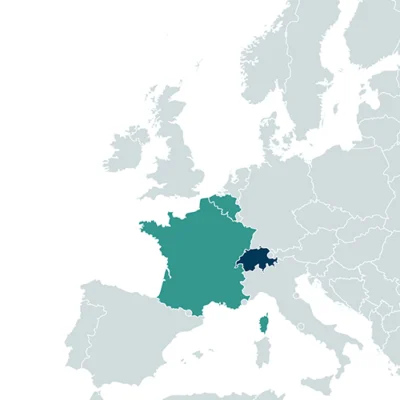Spontaneous Urban Nature and LOcal nO net land take Policies
Call
Duration
01/03/2025 – 29/02/2028
Total grant
Approx. 1.3. mil €
More information
Séréna Vanbutsele, Serena.vanbutsele@hefr.ch
Partners of the project
- TRANSFORM Institute, University of Applied Sciences of Western Switzerland, Fribourg, Switzerland
- Research Institute for social and territorial development, University of Mons, Mons, Belgium
- Natagora, Namur, Belgium
- LUMI, Scientific and Technical Centre for Construction, Marne la Vallée, France
- Laboratory for Landscape Project Research, National Graduate School of Landscape Architecture of Versailles, Versailles, France
- Department of Biology, University of Fribourg, Fribourg, Switzerland
- Institute for ecology and environmental sciences of Paris, Sciences Sorbonne University, Paris, France
- Earth-Nature-Landscape Institute, University of Applied Sciences of Western Switzerland, Geneva, Switzerland
- Médialab, National Foundation of Political Sciences, Paris, France
- Botanical Garden, Meise, Belgium
- Municipality of Ris-Orangis, Ris-Orangis, France
- Direction of economical, territorial and strategic development, intermunicipal company for the management and realisation of technical and economic studies, Charleroi, Belgium
- Fribourg Agglomeration, Fribourg, Switzerland
- Grand Paris Sud Seine-Essonne-Sénart, Evry-Courcouronnes, France

Context
The SUNLOOP project addresses the challenges posed by biodiversity loss and climate change in urban environments, focusing on spaces of Spontaneous Urban Nature (SUN) as a potential NbS within the context of “No Net Land Take” policies. These policies, that are generalizing throughout Europe, aim to limit the artificialization of urban surfaces, making wastelands, derelict spaces, and any informal green spaces valuable for urban development. Despite their potential social and ecological benefits, these spaces often face neglect due to their marginalization in urban planning. The project seeks to enhance understanding and awareness of SUN spaces that already exist in the urban fabric. The goal is to influence urban planning policies by integrating the socio-ecological value of spontaneous biodiversity.
Main objectives
The SUNLOOP project’s objectives are:
- To define SUN spaces according to various representations, professional practices (including scientific ones), policies and territorial contexts, with a focus on the interrelations between spontaneous nature and urban biodiversity;
- To understand how the socio-ecological knowledge and representations of SUN spaces can be enhanced by a pluridisciplinary approach involving architects, planners, landscape architects, ecologists, biologists, pedologists, geographers, sociologists, geographic information specialists, artists;
- To uncover conditions under which representations and actions (or voluntary lack of actions) on SUN spaces effectively form NbS in urban areas;
- To understand the discrepancy between the perception of the biodiversity of a space and the actual biodiversity supported by this space, to encourage a change of viewpoint on the part of local actors, to recognize multiple values, potentials, as well as downsides on the role of SUN spaces as a NbS in urban planning;
- To strengthen the international networking of local actors and academics who are committed to maintaining and enhancing SUN spaces and to propose integrated methods in urban policies to do so.
Main activities
The project emphasizes interdisciplinary research, combining environmental sciences, citizen science, urban planning and project-based and artistic approaches. The scientific team brings together expertise from Swiss, Belgian, and French academic institutions, as well as local stakeholders, sharing local perspectives on medium size cities that witnesses specific urban pressure in the common perspective of “No Net Land Take” policies.
Five workpackages (WPs) structure the project and are articulated with three local workshops that enable the interdisciplinary and experimental approach on the three application territories. These three major milestones gather transnational knowledge related firstly to the inventory and identification of SUN spaces, secondly to the observation and understanding of their socio-ecological co-benefits and thirdly to the experimentation of NbS using participatory and inclusive practices